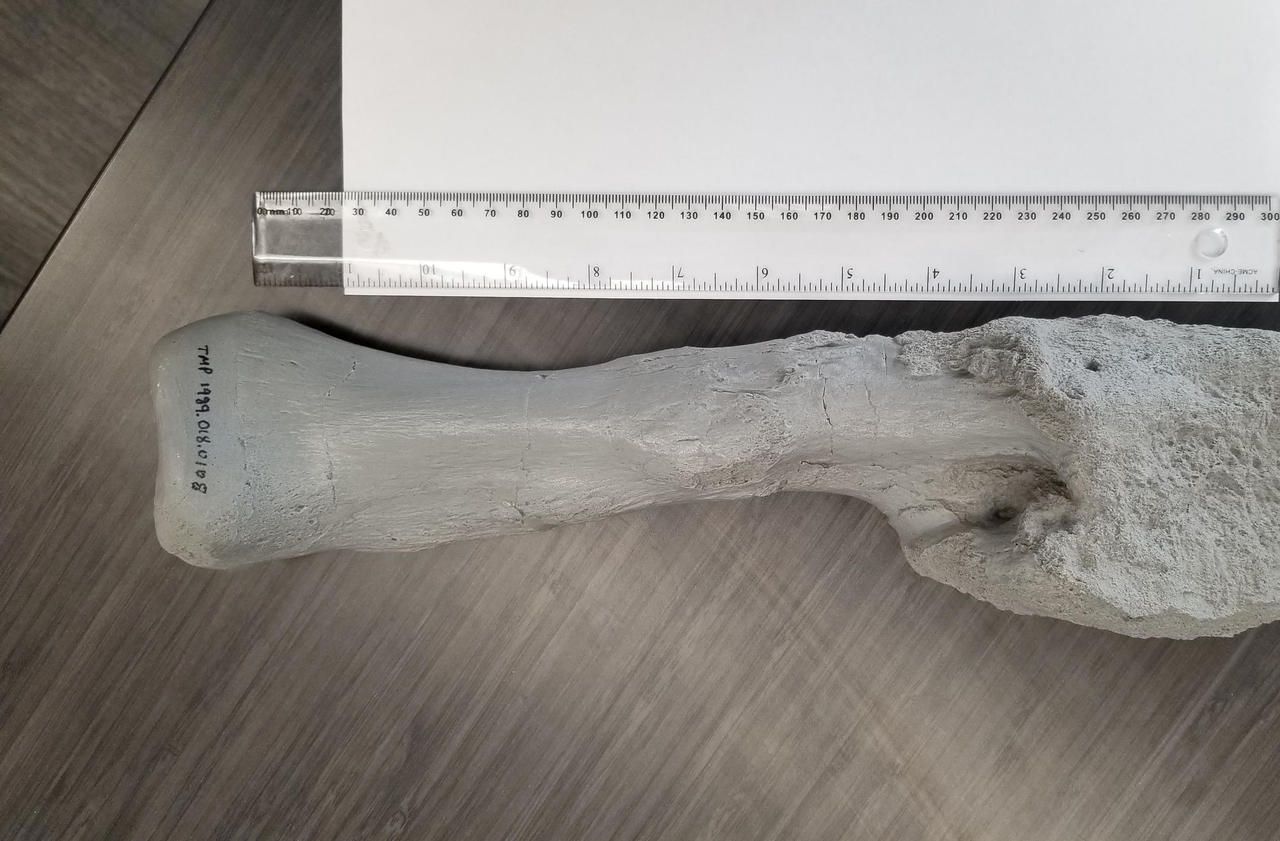Dinosaurs could also suffer from cancer. This is the conclusion of a study published in "The Lancet Oncology" and carried out by a team from the Royal Ontario Museum (ROM) and McMaster University.
A leg bone from a Centrosaurus was discovered by paleontologists in 1989 in the Canadian province of Alberta. Experts initially believed that the deformed bone had suffered a fracture that healed. But recent examinations, under a microscope and with advanced technologies, such as high-resolution tomography, have revealed that a lump on the bone, the size of an apple, is in fact a cancerous tumor.
"The dinosaurs did not have an easy life, many of them had healing fractures, or bone infections," says study author Mark Crowther.
On such ancient bones, "finding evidence of cancer is difficult," he emphasizes: most tumors develop in soft tissue, poorly preserved by fossilization.
The fine analysis of the bone of the prehistoric herbivore revealed a surprise: “Oddly, under the microscope, it looked a lot like human osteosarcoma,” a malignant tumor of the bones, explains Mark Crowther.
"They suffered from diseases like humans"
"It's fascinating to see that this cancer existed tens of millions of years ago and still exists," notes the researcher, who heads the faculty of medicine at McMaster University in Ontario.
The tumor of this Centrosaurus, a horned herbivore that lived 76 to 77 million years ago, probably caused metastases that made this giant lizard limp, say the study's authors.
Newsletter - Most of the news
Every morning, the news seen by Le ParisienI'm registering
Your email address is collected by Le Parisien to enable you to receive our news and commercial offers. Learn more
“The discovery of this cancer makes dinosaurs more real,” comments Mark Crowther. "We often imagine them as mythical creatures, walking with a heavy and sturdy step, but […] they suffered from diseases like humans."
A start to better understand the disease
However, the researchers believe that it was not this cancer that killed the Centrosaurus: the bone in his leg was found among a hundred bones in the same herd, probably swept away by a sudden disaster, such as a flood.
“By discovering an example dating back over 75 million years, we realize that (cancer) is part of life,” he concludes. "You have an animal that certainly did not smoke (!), So this shows that cancer is not a recent invention, and that it is not exclusively linked to our environment".
This study aims to establish links between human diseases and diseases of the past that will help scientists better understand the evolution and genetics of various diseases.








